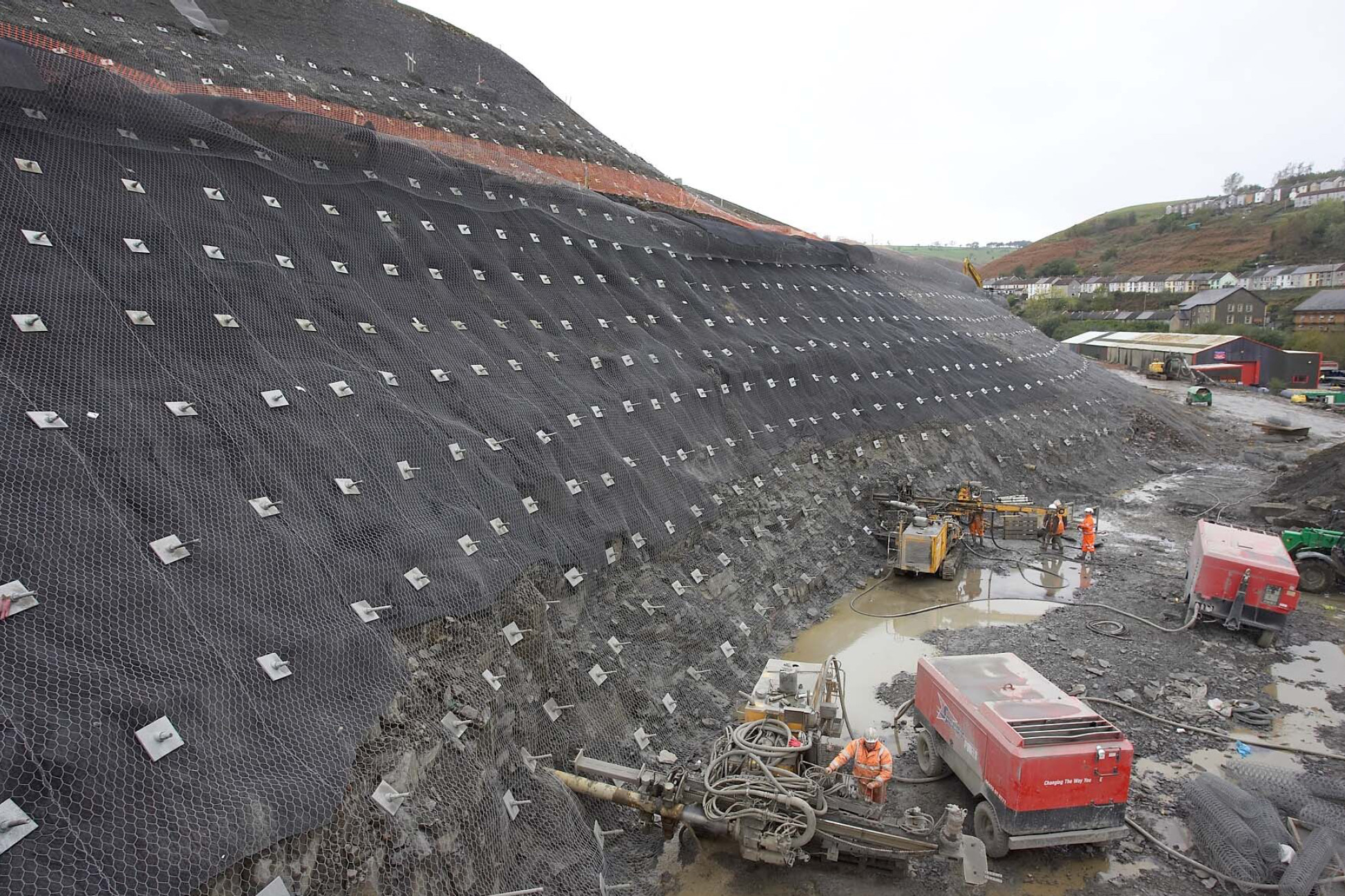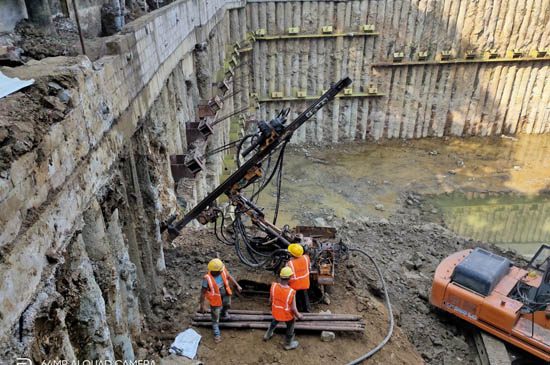Williams Anchors: High-Performance Anchoring Systems for Construction Projects
Wiki Article
High-Performance Rock Anchors for Challenging Environments
The necessity for high-performance rock anchors in tough environments can not be overemphasized, specifically in the context of high slopes and seismic areas where standard remedies commonly fail. These supports, defined by their remarkable load-bearing capability and progressed corrosion resistance, play a critical duty in ensuring the stability of structures under negative conditions. As we check out the ingenious modern technologies and finest methods that boost their performance, it ends up being obvious that recognizing their applications is essential for success in geotechnical engineering. Yet, the implications of these innovations extend far past plain security.Significance of Rock Anchors
The relevance of rock anchors in engineering and construction can not be overstated, as they provide critical stability and support in different geological conditions. These anchors are important for safeguarding structures to the bedrock, especially in locations susceptible to landslides, seismic activity, or other geological instabilities. By moving tons from the framework to stable rock developments, rock supports assist minimize the threat of architectural failing, ensuring both safety and long life.In addition, rock supports promote the construction of difficult tasks, including deep excavations, retaining walls, and bridge structures. Their capability to adapt to various soil and rock kinds makes them a very useful property in civil engineering jobs worldwide. The versatility of rock anchors allows engineers to develop solutions that address site-specific obstacles, maximizing both performance and cost-effectiveness.
Additionally, the usage of rock anchors can dramatically lower the quantity of material needed for construction, leading to even more lasting methods. As framework demands grow in complexity and scale, the importance of rock anchors in supplying trusted assistance systems will certainly proceed to be a crucial factor to consider in engineering design and execution. Their role in improving stability makes rock anchors crucial in the modern-day construction landscape.

Secret Features of High-Performance Anchors
High-performance anchors are identified by numerous essential functions that enhance their performance popular applications. One of one of the most significant characteristics is their remarkable load-bearing capability, which enables them to withstand extreme forces without jeopardizing architectural integrity. This is commonly achieved with sophisticated materials and innovative design, which make certain optimal strength-to-weight proportions.One more essential function is deterioration resistance, especially for supports utilized in severe environments. Using specialized finishes or corrosion-resistant alloys significantly prolongs the life expectancy of these supports, decreasing maintenance prices and improving dependability. Furthermore, high-performance supports are designed for flexibility, permitting for simple installment in various geological problems, consisting of fractured rock or loosened dirt.
Moreover, the flexibility to different anchoring systems, such as post-tensioning or grouted setups, showcases their engineering flexibility. Numerous high-performance anchors likewise integrate checking capabilities, making it possible for real-time assessment of anchor performance under tons. Finally, their compliance with international standards ensures that they fulfill strenuous safety and security and efficiency benchmarks, supplying confidence in their application throughout various sectors. These functions jointly contribute to the general efficacy and dependability of high-performance rock supports in facility and difficult atmospheres.
Applications in Testing Settings
Using sophisticated design principles, high-performance rock supports are vital in a variety of difficult settings, such as steep inclines, deep excavations, and seismic zones. These anchors click resources supply crucial assistance and stability in conditions where traditional anchoring approaches might fall short. In steep incline applications, they neutralize the forces of gravity and dirt erosion, avoiding landslides and ensuring the safety of browse around this web-site framework over.In deep excavation tasks, high-performance rock anchors are employed to stabilize maintaining wall surfaces and protect against wall surface failure, thus helping with risk-free building methods. Their capability to hold up against high tensile tons makes them ideal for these applications, where the integrity of the excavation website is vital.
Furthermore, in seismic zones, rock supports are important for improving the resilience of structures against earthquake-induced forces. By securely anchoring structures and facilities to the bedrock, they minimize the danger of structural failure during seismic events.
These applications show the adaptability and dependability of high-performance rock anchors, making them crucial devices in geotechnical engineering (Williams Anchors). Their efficiency in safeguarding difficult environments emphasizes the relevance of ongoing innovation and application of robust anchoring solutions in the area

Ingenious Technologies in Rock Anchoring
Current developments in rock anchoring modern technology have reinvented the method designers approach stabilization and assistance in geotechnical tasks. Advancements such as high-strength materials, progressed finishes, and wise tracking systems have actually substantially boosted the efficiency and dependability of rock anchors in tough settings.One noteworthy advancement is the usage of high-tensile steel alloys that use superior strength-to-weight proportions, permitting lighter and a lot more reliable anchor systems without endangering structural integrity. In addition, corrosion-resistant finishes, such as epoxy or galvanized finishes, extend the lifespan of anchors in extreme conditions, reducing maintenance requirements.
Furthermore, the integration of smart technology right into rock anchoring systems enables real-time monitoring of support performance. Sensors installed within the anchors can offer crucial data on load changes, displacement, and ecological problems, permitting designers to make enlightened choices and respond proactively to potential concerns.
In addition, advancements in installment techniques, consisting of making use of robotics check out this site and automated systems, improve the anchoring process, reducing labor costs and boosting safety. Jointly, these innovative technologies not just boost the efficiency of rock anchors however also guarantee the longevity and durability of geotechnical frameworks in tough atmospheres.
Ideal Practices for Setup and Maintenance
The efficiency of innovative rock anchoring modern technologies is mainly depending on correct setup and upkeep techniques. To make sure ideal efficiency, it is necessary to conduct detailed site assessments before installment. This includes assessing geological conditions, identifying potential threats, and identifying one of the most ideal anchoring method.During installment, adherence to manufacturer specs is crucial. Correct boring techniques, such as maintaining the correct angle and depth, can dramatically boost the support's grip. Furthermore, ensuring that the grout utilized for bonding works with both the rock and the support product is important for long-lasting security.
Post-installation, routine examinations need to be set up to keep track of for indicators of distress or degradation. This consists of monitoring for corrosion, displacement, and any type of modifications in load-bearing ability. Williams Anchors. Implementing a maintenance strategy that includes regular testing and re-tensioning of anchors can alleviate threats related to environmental changes or unexpected load rises
Final Thought
In final thought, high-performance rock supports play an essential role in protecting frameworks within difficult settings. The adaptability of these supports, combined with cutting-edge modern technologies such as smart tracking systems, improves their efficiency.Report this wiki page